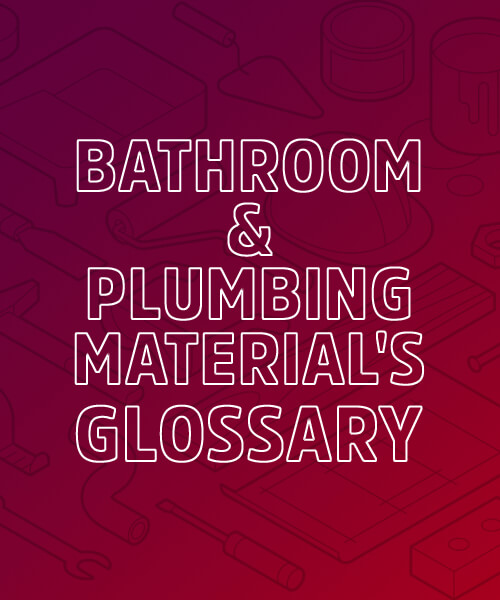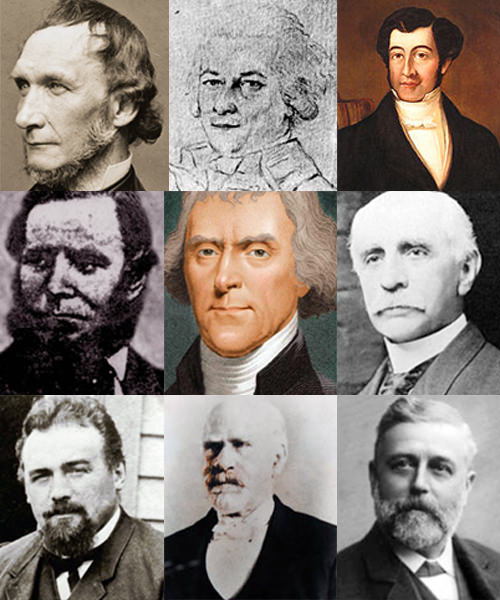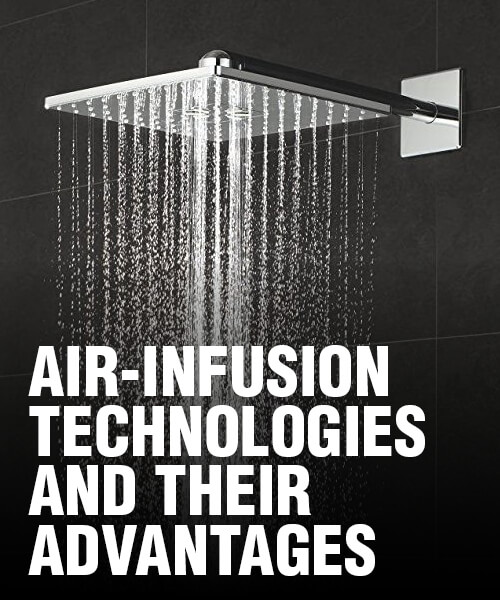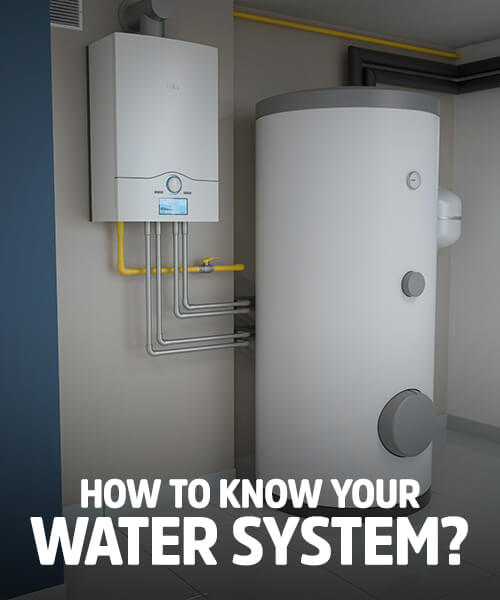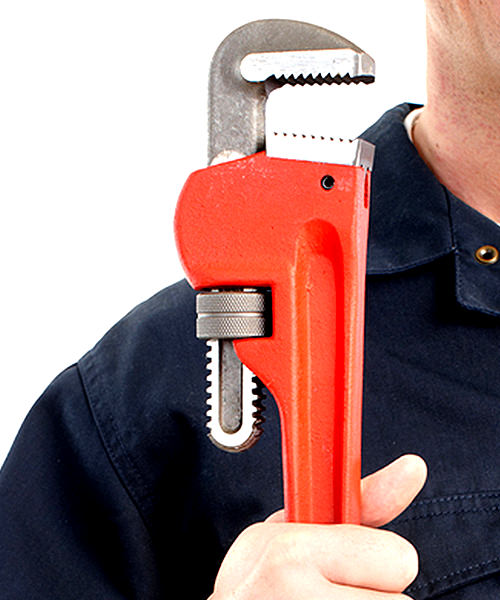Bathrooms are one of the most frequently used rooms in the home - and one of the most complex. When designing a bathroom, there are a lot of different components for homeowners to think about, many of which have several different options. It isn't enough to simply know whether or not a basin tap is needed; the homeowner also needs to know what size the tap should be, what its configuration is, and how it should be installed. This Help Center is designed with the homeowner who needs to understand the basic terminology for the bathroom in mind. Here, the homeowner can look at different components of the bathroom, from suited bathroom fixtures to various types of plumbing such as aerators and diverters and get a description of the item and how it pertains to the bathroom.
Now, someone searching for a shower system who sees that a diverter is necessary for their pressure balancing valve can look up these items, see a diagram of what they look like, and get a basic understanding of what those components are, how they work together, and why they may be necessary to achieve their bathroom goals. Broken down by section, this easy-to-navigate guide can be accessed either by scrolling, or by designating the type of section required. For example, someone wondering what a fascia panel for their bathroom vanity is can select “Furniture” to be directed straight to the relevant section.
Bathroom Suites
Back-To-Wall Toilet (BTW) describes a toilet that is fixed tightly to the surface of a supportive wall or item of furniture straight away behind it.
Corner-Fitting describes a bathroom fixture specially designed to fit a corner space.
Close-Coupled Toilet is used to describe a style of toilet wherein the cistern attaches directly to the pan.
Semi-Recessed Basins are used to describe a washbasin that hangs over the edge of the unit on which it sits.
Countertop Basins are used to describe a washbasin that sits on the surface of a vanity unit.
Wall-Hung Basins are used to describe a basin that is supported by a fixture to a load-bearing wall.
W.C. stands for 'water closet', but is more widely known as a toilet.
A 4-Piece Bathroom Suite is made up of 4 individual ceramic fixtures. These are the toilet cistern, toilet pan, wash basin and a pedestal. These are also known as Cloakroom Suite.
A 5-Piece Bathroom Suite consists of 5 individual ceramic fixtures. These are the toilet cistern, toilet pan, wash basin, pedestal and a bidet.
A Full-Pedestal Basin is the name given to the stand that supports a washbasin by sitting vertically on the bathroom's floor.
A Semi-Pedestal Basin is the name given to the half-sized basin by attaching itself to a wall.
A Push-Button Flush is the pushable fitting that controls a toilet's flushing mechanism.
Taps
A Bath Shower Mixer works equally well as a bath mixer and a shower, with water distributed through either the tap or shower outlets.
A Bridge is the horizontal connection between the hot and cold water taps.
It's that part of the faucet which makes the water flow smoothly by injecting air into the water.
A surface that is resistant to scratches and staining.
The term is usually reserved for a basin tap which mixes both hot and cold water within its domain and delivers mixed water through a single spout unlike two individual taps dedicated for hot and cold water.
The Bath filler-mixer is used for bathtubs and functions on the principle of mixing hot and cold water with the help of individual controls within its domain and delivering it through a single spout. In case of a shower mixer a shower hose with a spray head is attached additionally other facets being the same as a filler-mixer.
Generic term used to address bathroom fixtures such as taps, accessories and shower mixers that are usually made of brass metal
Involves the planting of ceramic cartridges or discs in a tap's mechanism to eliminate dripping and have a robust flow system with better control over its functioning.
These taps have a single spout wherein hot and cold water are blended if it's a single flow type, or the blending happens as the water leaves the spout in case of dual flow. The controls are sometimes dual or single-lever operated, but the spout remains distinctly singular.
Fabricated with individual or separate controls for hot and cold water with a single point or monobloc installation; the hot and cold water are mixed and delivered through its single spout.
To be mounted on a deck, platform, or countertop, many taps are manufactured to deck mount settings.
Means the presence of two individual levers for controlling temperature changes and making flow adjustments.
This is an arrangement for hot and cold water to be fed separately into the tap and the two streams of flow remain unmixed inside the tap blending only when they are outside.
It essentially limits the flow rate in a shower apparatus or a faucet, tempers excessive fluctuations and helps reach a steady flow.
Unlike the regulator, the restrictor is capable of only curbing high flow rates and does not have a bearing on fluctuations caused by varying pressure.
Reduces turbulence and swirl in the water flow.
High Pressure is an indication of the apparatus’ compatibility with high pressure water systems.
Is a handle, used to operate a device.
A set of two taps, each dedicated for hot and cold water, the underlying pattern in its diverse manifestations represents a pillar hence its body is taller than ordinary faucets.
Operating these taps is almost effortless, the tap can be turned on and off by rotating the lever at 90 degrees.
Has two functions infused in it—namely, control over the flow of water and manoeuvring temperature changes.
The respective apparatus is engineered with the ability to move sideways or at certain angles which help them cover greater area than would be possible in a stationary position.
The set consists of two individual levers for hot and cold water and a common spout, thus requiring three holes for its installation.
Water Regulatory Advisory Scheme is a board which declares a product’s suitability for domestic use and grants an approval on meeting standards concerning water consumption levels and the issues related to health and safety.
It is a specification and standard for manufacturing low resistance single taps deemed suitable for low pressure water systems.
Basins
It’s an extension of the bathroom vanity unit generally made of stone or glass with the intention of preventing the water from the basin splashing on to the wall immediately behind the basin.
Integrated into the wash basin’s plumbing, a bottle trap prevents waste gases in the drainage from returning to our bathroom.
These basins can be directly installed on a countertop as its rim is designed or fabricated to stay on top of the counter while the basin slips into the cavity below the counter, ideal as retrofits.
Ceramic-ware supplied without holes drilled into them for the sake of customisation.
It supports the wash basin from the base of the floor and eliminates the need for wall mounting the basin. Additionally, it enhances the aesthetics of the basin.
Is a property attached to special sinks that are made to fit countertops by easily mounting over them.
Is a basin that would partly protrude and partly fit into the vanity top of your bathroom, it can also be wall-mounted as a space saving initiative.
Is a type of sink which is mounted underneath the countertop, it offers the advantage of easy cleaning.
It is a compound of glass and silica based materials which is applied as coat on porcelain products such as WC pans, baths and basins to protect them from scratches and stains as an anti-vandal measure.
Is designed to fit with countertops that are fabricated with an accommodating cut. The rim of this sink holds firmly onto the counter.
Heating
Stands for Annual Fuel Utilization Efficiency. It's a rating given to a product if it's able to absorb and utilise 90 per cent of the fuel and effectively convert it into heating for your homes.
Stands for British Thermal Unit, each unit measures the amount of energy used to heat or cool one pound of water by 1 degree Fahrenheit
Low Emissive possess the quality of reflecting heat that helps keeps a place cold during summers and warm during winters.
Does the job of radiating heat in a room which it receives from a boiler which happens to be its heating source and of the central heating system.
Is a device to regulate the flow of hot water in a central heating system which runs on hot water to areas in need of heating, this procedure is self-regulating in case of thermostatic radiator valves.
Used to manually vent the excess air or air locks out of the radiators which hamper the flow of hot water.
It is a metal rail attached to the wall for hanging towels. The heated version, called Heated Towel Rail, is used often to dry towels and also prevent the bathroom from getting damp.
A British and European specification and requirement for materials used in radiator manufacturing.
It retains heat in the room on the principle of heat exchange between inbound and outbound airflow.
Shower Cubicles
Safety Glass is manufactured to be substantially thicker than standard glass, increasing both stability and user safety.
Patterned Glass is manufactured with a repeating shape on the interior that further increases privacy.
Frameless Glass describes a cubicle, door, screen or panel that utilises a minimal amount of metal or plastic to keep the glass in place.
Framed Glass describes a cubicle, door, screen or panel featuring glass mounted inside a metallic or plastic outer frame.
An Offset Quadrant Shower Enclosure is predominantly rectangular in shape, but features an angled corner at one end.
An Inset Shower Tray is a thin tray suitable for installation either inside or upon the bathroom floor.
An In-Line Shower Panel attaches to a shower door in order to increase the size of the cubicle.
An End Panel is a supplementary glass panel that contains shower water in the absence of a side wall.
An Adjustable Shower Tray is supplied with changeable feet, enabling the user to choose the height at which the tray stands and to allow room for plumbing.
A Square Shower Cubicle is an enclosure that fits a square area in the bathroom, generally comprising a door and a minimum of 1 side panel.
A Slider Door operates by running along a guide track in order to allow access and is generally used in rectangular cubicles.
A Side Panel is a screen that attaches to a shower door at 90° to prevent leakage wherever a side wall isn't present.
A Shower Tray is the standing area at the base of the shower cubicle, featuring a waste to release excess water.
A Shower Screen is positioned on the perimeter of a bath in order to prevent shower water from escaping
A Rectangular Shower Cubicle is an enclosure that fits a rectangular area in the bathroom, generally comprising a door and a minimum of 1 side panel.
A Quadrant Shower Enclosure is quarter circular in shape and designed to fit into a corner space.
A Pivot Shower Door revolves on pins that are positioned at the top and bottom of the frame, providing a wider entrance.
A Pentagon Shower Cubicle comes with 5 individual glass surfaces and is designed to fit inside a corner area.
A Neo-Angle Shower Cubicle is constructed from a central door with adjoining panels fitted at angles on both sides.
A Hinged Shower Door swings open by utilising metallic side hinges.
A Floor-Standing Shower Tray sits directly on the bathroom floor, but needs space below for plumbing and drainage.
A Corner-Entry Shower Cubicle features 2 sliding doors that open from a corner point.
A Bi-Fold Shower Door operates by bending in the centre. Whilst one end remains in a fixed position, the other runs along a track allowing access.
Reversible describes a shower door or panel that is suitable for use when rotated or turned upside down.
Adjustment describes the capability of a shower cubicle to fractionally increase or decrease in size to fit a given space.
Shower
A surface that is resistant to scratches and staining.
A measuring unit used to check water pressure whereby 1 Bar equals the pressure of a 10 meter high column of water.
Is an electronically controlled unit that offers thermostatic control over water temperature which includes mixing and programming pre-sets for safety.
The control is in the hands of the user to mix hot water and cold water according to their preference.
A device within a shower system that helps channelised or direct the flow to desired outlets.
A valve that restricts the flow of water in the unwanted reverse direction.
Is a scenario where water starts to flow from one side of the mixing valve to another which could lead to water contamination.
A valve used to facilitate the opening and shutting of an air flow
Lets you divert the water flow to different outlets and allows you to control those one at a time.
A metal covering commonly seen around key holes, light switches is also used in bathrooms for shower valves , faucets and showerheads.
Same as environment friendly, which means having a low-level impact on the use of natural resources.
Amount of water delivered by an in-unit measurement (usually in liters) per minute
an integral part of the shower valve used in asserting control over the water flow into a cistern/tank
Allows us the freedom to hold the showerhead in our hand which is connected to a hose for flexibility of movement.
Stands for Kilo Watt which equals one thousand watts.
This device arrests the possibility of back flow which leads to water contamination.
Unlike instant shut down the phased type waits for the hot water to be completely removed from the shower system and continues to run cold water for a few moments even after you have switched the electric shower off, to ensure non-accumulation of lime-scale deposits.
A Power Shower is fitted with a built-in water pump which increases the pressure of the water flowing into shower, beneficial for gravity fed water systems that are unable to generate enough pressure.
This rail supports the showerhead and shower hoses and is fitted with a slider that is instrumental in bringing flexibility for height adjustments.
Is a control knob that has the rise in temperature triggers arranged in a progressive sequence where as you turn the knob higher the water temperature gets hotter.
A wall-mounted shower unit embedded with multiple or few jets and are also available with thermostat controls.
Is another term for riser rail.
It is a valve used to regulate the flow of fluids and gases being carried in pipes.
These are extendable in length. The unique screw action at the end of the buffer fixes the rod by suction mechanism into the wall which results in a simple and a hassle free installation.
These showers mix hot and cold water and the temperature is monitored and maintained by thermostat settings ensuring safety against scalding.
Stands for Thermostatic Mixing Valves, apart from blending hot and cold water shut the appliance at 43 degree Celsius as a preventive measure against scalding. A certification known as TMV2—for domestic environments.
For high-risk areas such as hospitals is awarded by Buildcert to those brands who manufacture their valves to safety standards recommended by Buildcert.
Is an internal component of any tap that controls its flow mechanism.
Is a device that stops the water flow toward an outlet or in a particular room while keeping other water outlets in use.
Boiler
Plays a pivotal role in central heating and providing hot water for domestic use, eliminating the need for a water cistern to store hot as well as a separate feed tank for cold water by providing instant heating.
Heats water for the central heating system as well as domestic use in the kitchen and bathroom.
Is a pipe or a duct that facilitates the gases from a fire place and furnaces to travel outwards through its exhaust system.
Bath
A bathtub made from acrylic sheet which is subsequently insulated with Glass Reinforced Polyester for added toughness.
These offer support to standalone bathtubs made of acrylic and cast iron; the feet are also made from either brass or cast iron in most cases.
Used for levelling, especially in case of bathtubs and when they are installed this accessory is imperative.
A layer of material applied to the surface of a ceramic-ware or glass panels to restrict or prevent the growth and breeding of germs, bacteria and other microorganisms.
A therapy involving the use of coloured lights in a particular order to cause relaxation.
A Corner Bath is specially designed bath that fits in a corner that features a bowed front and two identical sides.
The structure is essentially made of iron and covered with porcelain.
This design is intended for corner installation with one side longer than the other, this unevenness gives it the offset character.
Often used in making baths and shower bases/trays, is preferred for its durability and lightweight.
A wooden plank affixed to the bottom-surface of an acrylic bath in order to bolster it with this reinforcement.
A coat of glass-like material applied to steel and cast iron baths to protect from staining and scratches and add durability.
Used to cover the sides of a bathtub.
Glass Reinforced Polyester are sheets made of fibre glass affixed underneath acrylic baths to add additional endurance capacity and sturdiness.
A thin glass-like water-resistant coating made of an amalgam containing a vitreous substance to protect ceramic ware from scratches and staining.
The practice of treating body ailments with water.
The frame of an acrylic bath is laid to rest on these which are made from steel with adjustable feet.
Flat surfaced fixture used both for aesthetic and functional reasons as front end panels with baths and other units of a bathroom suite.
A Shower Bath is designed to provide extra space when one chooses to have a shower inside it. It is also accompanied by a Bath Screen.
These are holes drilled to fit taps, the number of holes depends on the set configuration, which may call from a single hole to even three tap-hole requirements.
Found in whirlpool baths, these fittings are used to direct the flow of water and consist of spherical exteriors so they can be turned to different angles within a spherical seat in which they are held by a retainer ring.
Is a bathtub with jet sprays planted at its base and sides to swirl the water and simulate a massaging effect with swift changes in water pressure all of which can be programmed and controlled by the user.
European Standard for using cross-linked cast acrylic sheet appropriate for domestic use, the standard further checks for surface defects such as cracks or colour inconsistency and waste outlet hole provision apart from the material requirement.
Furniture
A flat panel used to make bathroom cabinets or WC furniture.
A freestanding unit can be placed anywhere in the bathroom as it need not be wall or deck mounted.
A gripping device attached to doors and many bathroom appliances, is used to access control.
A varnish made from shellac applied on wood to impart lustre and a protective layer.
A worktop for the kitchen made from an amalgam of wooden layers bound by plastic and other material.
A strip of wooden frame applied to the sides and edges of a wooden board.
Is a storage cabinet for toiletries
An entire suite is designed with a modular approach whereby the units are individual components suited for easy arrangement with the added flexibility to interchange their positions to serve functional goals.
A panel fairly ornate is affixed on the cabinets.
These units are meant for storage purposes and made without doors.
Means a vanity countertop pre-fabricated to contain a drop-in-sink.
Is pre-fabricated, no need for assembling, ready to install.
The term is intended for taps and furniture alike that have a tall body or structure.
Is a unit that combines a wash basin with a worktop, either a built-in storage cabinet or a pedestal is usually forming the base of the unit.
Is a cabinet that forms the base of the vanity unit which offers storage area.
Is a thin wooden sheet that is applied to furniture items as a protective layer and embellishment.
A beam made of wood or metal instrumental in providing structural support.
Plumbing
An air bubble trapped inside a pipe leading to blockage generally attributed to bad plumbing or a layout which causes air trapping.
These pipes help stabilise the water flow.
Refers to water systems that do not have high pressure connections and usually have water stored in a tank which is stored at a height and works on the gravity pull principle.
It's a case of water backflow as a result of siphonage from an apparatus into the pipe that feeds it.
Two valves are consecutively placed to arrest or stop reverse siphonage.
Grooves found on nuts that are attached to shower hoses and knobs which help with gripping.
Is used as one of the components in waterproofing a wet area; it is an integral unit of a tanking kit.
Pre-drilled hole in a basin to hasten the draining process especially when the basin is heavily filled and an overflow needs to be avoided.
It can be made to appear as a column which functions like a pedestal, it can also take the form of a base block that is able to conceal plumbing work.
Is a drain-plug which is highly effective in preventing drain clogging.
A tape used to secure threaded plumbing (Poly Tetra Fluoro Ethylene)
A useful accessory used in joining pipes of different sizes.
Is that section of the draining pipe where the sewer gases are trapped and not allowed to return to surface.
Toilet / Bidet
Seen as a key feature in eco-friendly toilets, dual flush has two settings whereby a person can conserve water by choosing the option which uses lesser amounts of water to flush.
The entire structure is built from a uniform material such as porcelain hence the name one piece.
With Close Coupled Toilet a cistern or a tank is attached to the WC pan and they both are treated as one unit, the tank comes with a cover.
A water tank connected to and used for the purpose of flushing the toilet. There are larger cisterns which are used for other domestic purposes.
The channel used for flushing purposes in toilets and in urinals, modern designs incorporate the use of concealed arrangements which are efficient and have better aesthetic appeal.
These are toilet cisterns which can be opened from the front in order to check their mechanism.
Helps the flushing mechanism to execute its function integral to a WC cistern tank.
Gallons Per Flush is indicative of the amount of water consumed in a single flush to check efficiency on water consumption.
Is a WC outlet with a straight horizontal design.
It saves the water cistern attached to the WC from overflowing in the event of a malfunction.
Water from the cistern tank is flushed into the WC pan at the mere push of a button.
Used to describe the flow arrangement devised to flush the WC pans—where the water is guided through or under the rim depending on the type of rim used.
This is a type of WC pan in which the water does not travel the rim but is sprayed with jets created within the WC pan.
Is a toilet bowl which is shorter in length than the elongated bowl considered better for smaller bathrooms, with prescribed dimensions of 14 inches in width and 16 and a half inches in length.
Is a mechanism which helps water from a higher altitude to be brought down to a lower one. This principle is applied in cistern tanks to flush WC pans and even gravity fed water systems.
With Wall Hung WC, the cistern is not visible as it is concealed, and the pan is wall mounted.
Is a term which comprehensively covers a toilet bowl and a water tank attached to it encompassing even the area associated with it.
Why Bathroom Abbreviation List?
Most of the terms and abbreviations mentioned on the page are accompanied by diagrams or images to help facilitate understanding. A description of a reducer is shown with an image of two sections of pipe, one larger than the other, for example, to make the description clear for those who have trouble visualising why one might need this item.
Bathrooms are complex by nature, and with more homeowners tackling DIY bathroom remodels or getting involved in the selection and purchase of components than ever before, it only makes sense that these homeowners get a better grasp on what it is that they’re choosing and installing. Encompassing all components of the bathroom, from luxury items such as heated towel rails to basic items such as toilets, this guide can assist homeowners in selecting the right item for every part of their bathroom design. Whether needing to determine the difference between a close-coupled toilet and a one-piece toilet, or wanting to know what a concealed trap way is on a different model, this guide is designed to make the selection process easier. Knowledge is power, and with the ability to understand basic abbreviations such as GPM (gallons per minute) as well things such as the difference between countertop and undermount sink basins, users can make better choices for their bathrooms.
At QS Supplies, the consumer’s needs come first, which is why this Help Center was created. Now even the most inexperienced homeowner can determine exactly what they need for their bathroom, and order it without unnecessary stress or worry that they aren’t purchasing the right thing.
Check out the Help Center for every question on bathroom fixtures, plumbing, or components to ensure the right part is ordered every time.

